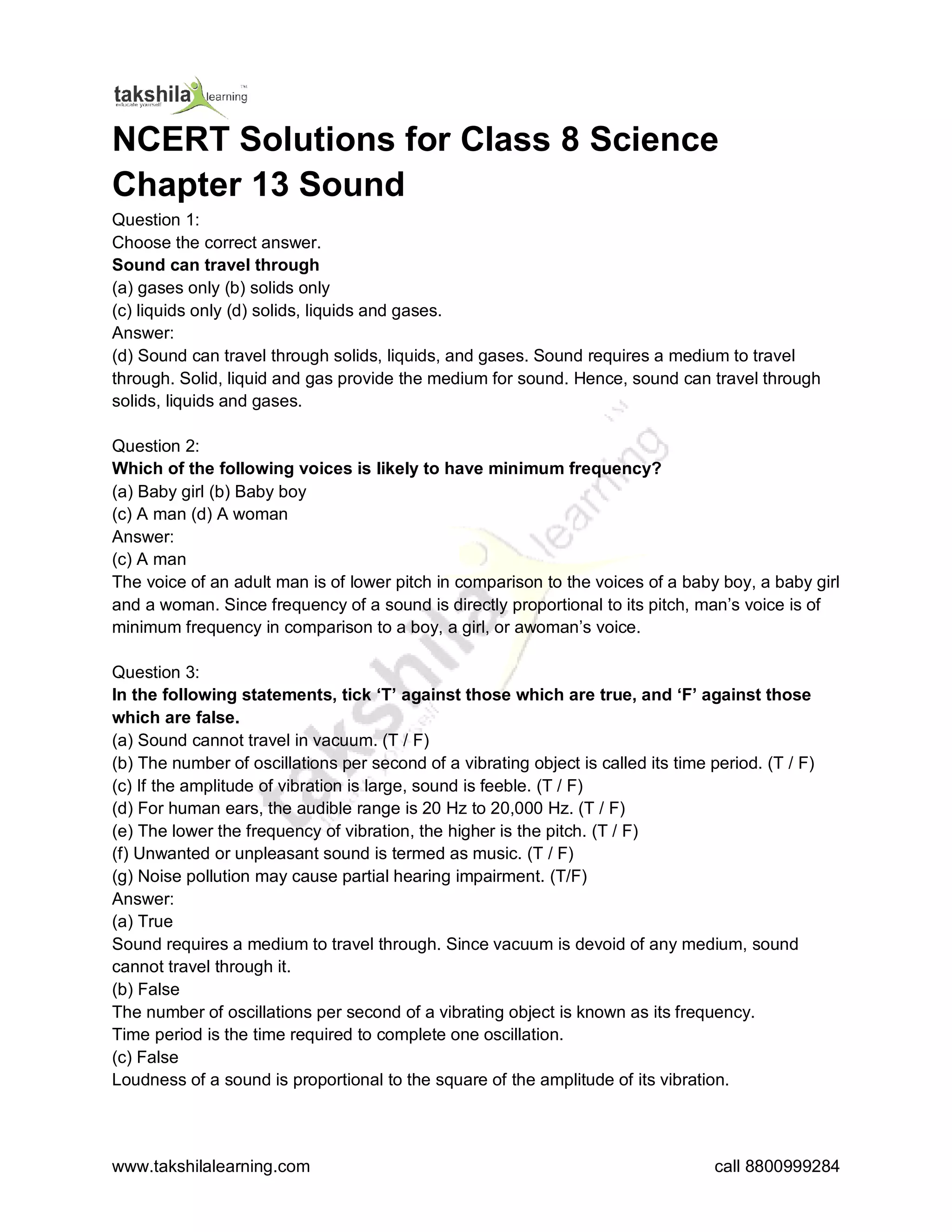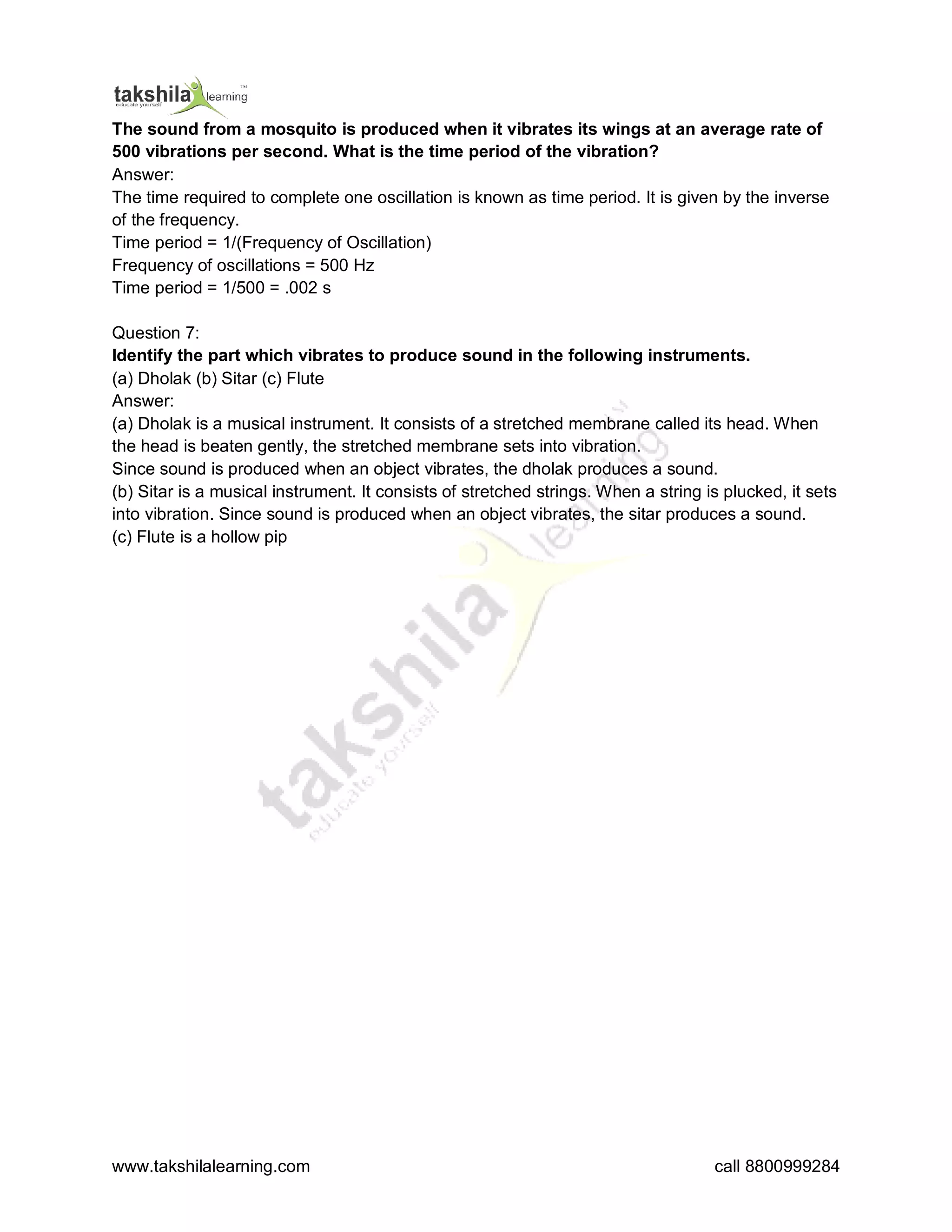The document contains questions and answers about sound from a science textbook. It discusses topics like how sound travels through solids, liquids and gases; the frequency ranges of different voices; true/false statements about sound; definitions of terms like time period and frequency; examples of calculating time period and frequency from given oscillations; and parts of instruments that vibrate to produce sound.


